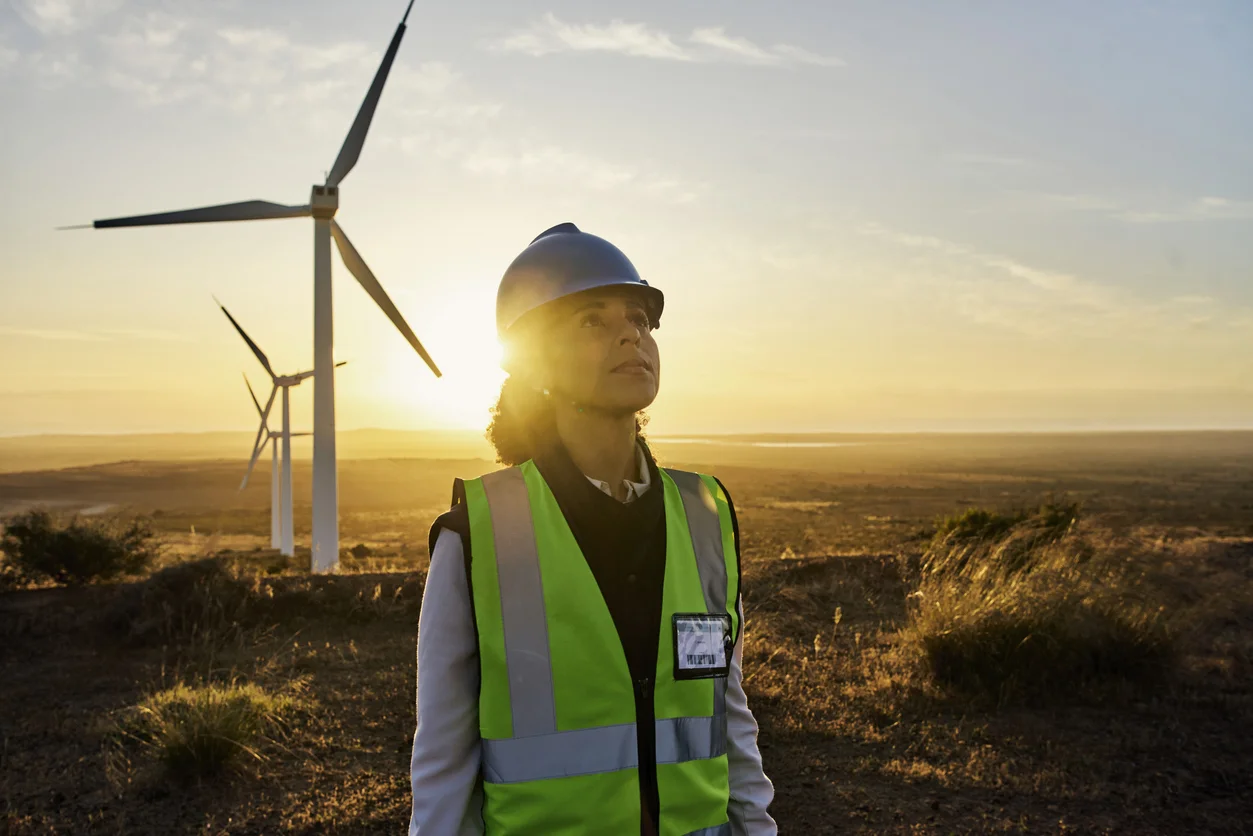Integrating green energy and renewable resources into your business

Green energy and renewable resources: Benefits and challenges
In a world characterized by increasing environmental challenges and the need to reduce carbon emissions, the transition to green energy and renewable resources is becoming increasingly important – for both society and business. In this blog post, we explore the benefits and challenges of using green energy and renewable resources, and how companies can integrate these solutions into their operations.
Benefits of green energy and renewable resources
1. Reduced environmental impact
Green energy, such as solar and wind power, has a significantly smaller environmental footprint than fossil fuels. By using renewable resources, businesses reduce their carbon emissions and help mitigate climate change.
2. Cost savings
By mapping significant environmental aspects and CO₂ emissions, the company can identify and reduce its environmental impact – including emissions, waste and resource consumption. This can lead to lower operating costs and more efficient resource use.
3. Improved reputation and customer loyalty
By embracing green energy and renewable resources, companies demonstrate their commitment to sustainability and environmental protection. This can strengthen the company's reputation and contribute to increased customer loyalty among environmentally conscious consumers.
4. Future-proofing through environmental certification
Achieving environmental certification through recognized bodies such as ISO 14001 reinforces a company's commitment to sustainability and provides reliable indications of environmental responsibility. This not only enhances its reputation but also demonstrates its commitment to a greener future.
Challenges in the transition to green energy
1. Initial investments
The biggest obstacle for many businesses is the high initial costs associated with establishing green energy infrastructure, such as solar panels or wind turbines.
2. Weather dependence
Renewable resources such as solar and wind power are weather-dependent, which can lead to unpredictability and variability in energy production.
3. Technological limitations
Some industries may face technological challenges when it comes to integrating green energy and renewable resources into their operations – especially if they rely on heavy industry or other energy-intensive production. In such cases, current technology may be insufficient to meet energy needs in a sustainable manner.
Conclusion
The transition to green energy and renewable resources is essential to building a sustainable future, and businesses play a key role in this development. By investing in green infrastructure, developing sustainability strategies, and collaborating with suppliers, businesses can integrate green energy into their operations, reducing their environmental impact while ensuring long-term success.
Want to learn more about implementing an environmental management system? Download our guide now.
Related posts
A guide to quality management trends for 2025
Discover the future of quality management in 2025! The world is changing rapidly, and quality management (QMS) must keep up. New technologies such as...
10 steps to better process flow: A guide for modern businesses
Effective process maps are the key to a good process-driven management system. This guide gives you a practical and easy...
Quality and risk with ISO 9001
In today's dynamic business world, quality and risk are two sides of the same coin. Many companies are already working purposefully to achieve...


